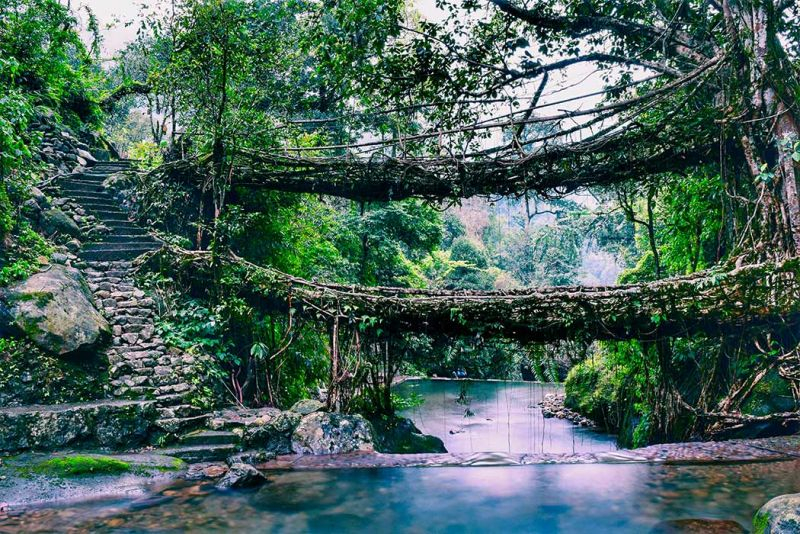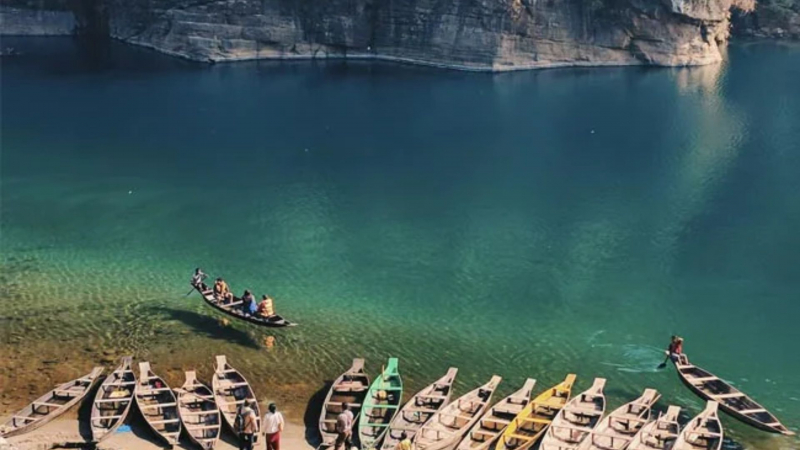Meghalaya, India
Meghalaya, which means "abode in the clouds" in English, is a state in northeastern India and is home to some of the region's most tranquil and beautiful scenery. It could be difficult to visit because a permit is needed. It's worthwhile, though. The settlements of Cherrapunji and Mawlynnong are located in Meghalaya. Both locations hold the record for being the wettest on Earth, with an average annual rainfall of around 12,000 mm (472 inches). As a result, the state's iconic bridges provide access to lush, leafy forests with rivers and creeks that can be explored. Locals constructed these 500-year-old structures out of ficus tree roots to represent the Khasi tribe's independence and connection to the wild. Over 70 villages have living root bridges, also known as "jingkieng jri" in Khasi, which are still utilized and cared for by residents today to preserve them for future generations.
Some of the well-known tourism destinations in Meghalaya include Shillong, Tura, Jowai, Cherrapunjee, Nongpoh, and Baghmara. More specifically, Meghalaya has many tourist destinations that are well worth visiting, including Wards Lake, Lady Hydari Park, Sweet Falls, the Butterfly Museum, Nohkalikai Falls, Mawsmai Cave, Thangkarang Park, Eco Park, Khoh Ramhah, and Green Rock Ranch. When it comes to bringing something back, you'll be happy with your bag of moments becoming memories and the ability to bring along the exquisite handiwork created by this state's citizens. Overall, this incredibly lovely, lush, and vibrant state is ideal for vacations and may be enthusiastically enjoyed by all! They were included on UNESCO's potential list of World Heritage sites in 2022. The Umshiang Double Decker root bridge in Nongriat village, south of Cherrapunji, and one in Riwai in Mawlynnong, which has been recognized by UNESCO as the "cleanest village in Asia" since 2003, are the most well-known living root bridges.












